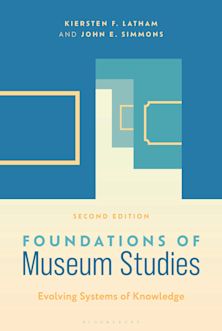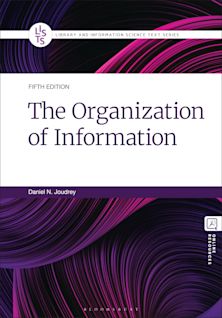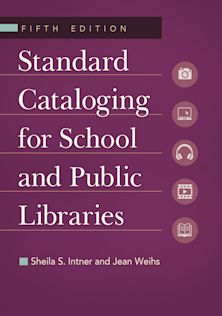- Home
- ACADEMIC
- Library & Information Science
- Cataloging and Classification
- Making the Move to RDA
Making the Move to RDA
A Self-Study Primer for Catalogers
Making the Move to RDA
A Self-Study Primer for Catalogers
This product is usually dispatched within 3 days
- Delivery and returns info
-
Free US delivery on orders $35 or over
You must sign in to add this item to your wishlist. Please sign in or create an account
Description
Making the Move to RDA: A Self-Study Primer for Catalogers is aimed at catalogers working in the MARC environment who currently create records using AACR2 and need to transition to using the new standard, Resource Description and Access (RDA). Since both RDA’s structure and content differ from AACR2 in many respects, this primer details the development and rationale for RDA as well as its intended goals, principles, and objectives. It then explains RDA’s theoretical underpinnings—collectively known as the FRBR Family of Models.
Framing the text along these lines provides readers the context for understanding the similarities and differences between AACR2 and RDA, both in terms of content and structure. With this foundation in place, the book takes the reader on a survey of RDA elements used to describe bibliographic and authority records and demonstrates how the MARC code has been expanded to accommodate new elements. Finally, it leads the reader field-by-field through MARC bibliographic records for book and non-book resources as well as through authority records for works, expressions, persons, families, and corporate bodies, describing the similarities and differences between AACR2 and RDA for each field.
Examples are provided throughout the text to help the reader visualize the concepts presented.
Table of Contents
Part I. RDA Background Explained
Chapter 1. Development, Objectives, and Principles
Chapter 2. Underlying Models and Organization
Chapter 3. Major Differences between RDA and AACR2
Part II. RDA Instructions Summarized
Chapter 4. Attributes of Manifestations and Items
Chapter 5. Attributes of Works and Expressions
Chapter 6. Attributes of Persons, Families, Corporate Bodies, and Places
Chapter 7. Recording Relationships
Part III. RDA Applied in the MARC Environment
Chapter 8. Creating and Interpreting Bibliographic Records for Books
Chapter 9. Creating and Interpreting Bibliographic Records for Non-Book Resources
Chapter 10. Creating and Interpreting Authority Records
Acronyms
Bibliography
Product details
| Published | Jan 13 2014 |
|---|---|
| Format | Paperback |
| Edition | 1st |
| Extent | 346 |
| ISBN | 9780810887695 |
| Imprint | Rowman & Littlefield Publishers |
| Illustrations | 3 BW Illustrations |
| Dimensions | 9 x 6 inches |
| Publisher | Bloomsbury Publishing |
About the contributors
Reviews
-
RDA is still a moving target, with ongoing revisions taking place in addition to the evolution of how MARC and environments like WorldCat accommodate RDA. Throw into the mix developing data carriers outside of MARC, and it becomes clear why a book on RDA must be able to speak to many perspectives all at once. Making the Move to RDA: A Self-Study Primer for Catalogers takes on this challenge effectively, providing context on RDA's structure and scope, explaining RDA's instructions for cataloging materials of all formats, and comparing its application in MARC to that of AACR2 in clearly defined sections that allow catalogers and administrators of all levels of expertise to easily find the chapters that address their specific needs. . . .Beyond the thorough and clearly explained treatment of RDA in this book, it is perhaps the flexibility it offers that is one of its greatest strengths. Catalogers from all types of institutions and of all types of learning styles will find the information in this book neatly organized, allowing them to read through the book in the order they prefer and later revisit the book's specifics without getting lost. Combined with other training resources and the ongoing monitoring of changes in RDA, catalogers will be prepared with this book to navigate the changing cataloging environment we face today; it is a thorough and versatile resource that will remain of continued use to catalogers for years to come.
Olac Newsletter
-
[T]his book is clearly written and is a fantastic resource for catalog librarians and students looking to acquire knowledge about how to catalog using RDA. The careful organization of this book, as well as its detailed index, make this volume a highly useful tool.
Technical Services Quarterly
-
The goal of this book is to provide a practical and immediately usable guide for catalogers to creating bibliographic and authority records using RDA, even if they have little or no previous training in RDA. Kincy and Layne do an admirable job of meeting this goal. . . .Making the Move to RDA is an excellent primer for catalogers who are looking to change over to the new code. The book provides practical guidance for getting started, and has a thorough 13-page index with many entries for specific MARC fields and specific RDA instructions that make navigating the chapters for quick reference easy. I recommend the book to any cataloger interested in RDA, especially experienced catalogers who are well-versed in AACR2, but are not familiar with RDA.
Technicalities
-
Making the Move to RDA will be useful to new and experienced catalogers alike who lack an understanding of RDA, especially those working in a MARC environment. The book is a strong reference guide that will help catalogers navigate the current mixture of RDA and AACR2 records that coexist in today’s catalogs.
Library Resources & Technical Services (LRTS)
-
This title’s thorough examination of RDA explains much for cataloguers. This title is highly recommended as a work which supports transition to this new cataloguing environment, offering very full and deep discussion and many examples to explain the benefits of change.
Australian Library Journal
-
Finally, an RDA primer that is useful for practicing catalogers and cataloging students alike! Kincy and Lane’s book is like having a conversation with two expert catalogers as they walk you step-by-step through the intricacies of the conceptual models of FRBR, FRAD, and FRASAD that serve as a foundation for RDA and then guide your hand through comparisons between AACR2 records to those created applying RDA. The text includes a multitude of useful examples for cataloging book and nonbook resources, along with explanations of the differences between AACR2 and RDA when creating the records for each format. The chapters on authority record elements provide the reader with detailed explanations of the changes as well as new RDA elements present in authority records and their connections to the conceptual models. This logically organized and accessible self-study primer is a necessity for all cataloging departments as they ‘make the move’ to RDA and for beginning and advanced cataloging students who are just learning about the potentials of RDA.
June Abbas, Professor, School of Library and Information Studies, The University of Oklahoma


































